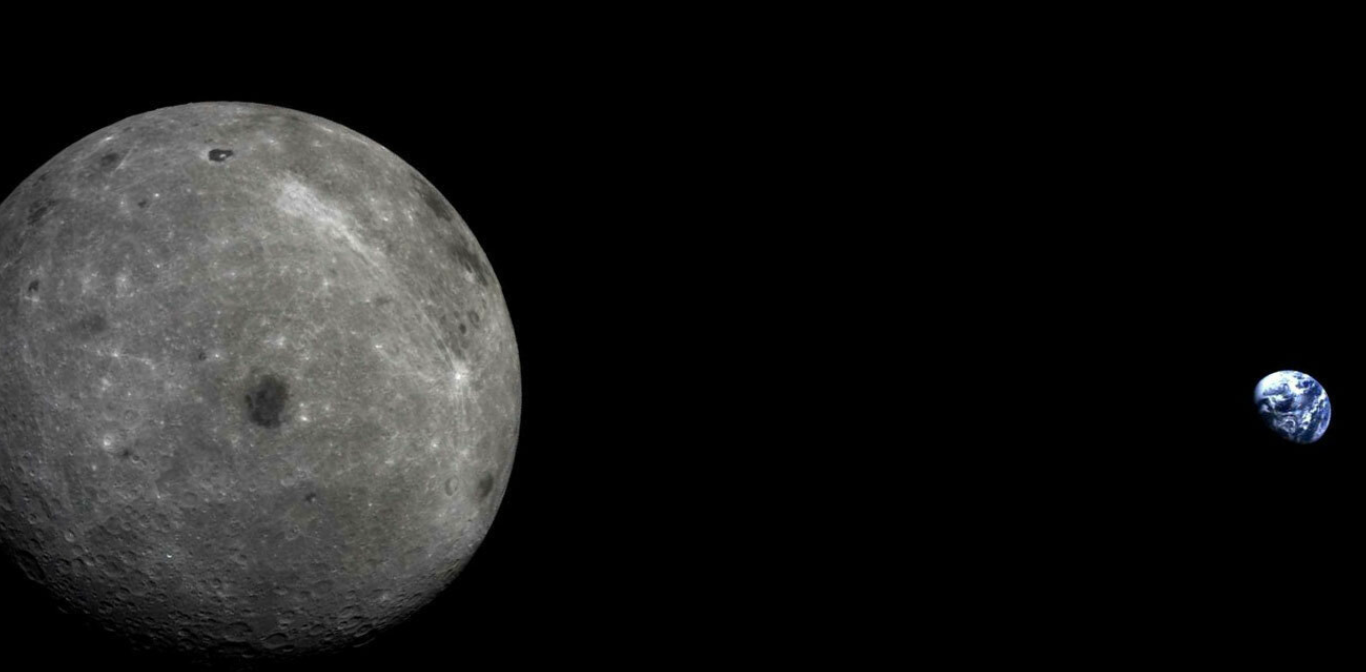Chang'e 6 to Make Historic Lunar Farside Sample Return in Early May

China’s Chang’e 6 lunar probe and Long March-5 Y8 carrier rocket have been transported to the Wenchang Space Launch Center in Hainan Province and have completed assembly and testing. The spacecraft-rocket combo was transferred to the launch area on April 27th and is scheduled for launch in early May, marking the first-ever human sample return mission from the lunar farside.
While the US, Soviet Union, and China have all collected Moon rocks, none have ventured to the far side. Spacecraft had only captured images of this hidden lunar face until China’s Chang’e 4 mission touched down in the South Pole-Aitken Basin in 2019. Following this historic landing, China successfully retrieved lunar samples from the near side in 2020, marking the first mission in over 40 years and demonstrating their ability to bring back spacecraft from the Moon.

Unlike its predecessor, Chang’e 5, which returned samples from the Moon’s nearside, Chang’e 6 will venture to the lunar farside for sample collection and return. The farside is generally older and home to one of the Moon’s three largest impact basins, the Aitken Basin, making it a region of significant scientific interest. Chang’e 6’s designated landing zone is located within the Aitken Basin in the Moon’s south polar region, aiming to collect samples from different regions and of varying ages to enhance our understanding of the Moon’s history and geological evolution. This mission will push the boundaries of lunar orbit design and control, farside intelligent sampling, farside liftoff and ascent technologies, and autonomous sample return from the Moon’s backside.

The 8.2-ton Chang’e-6 consists of a lander, ascender, orbiter and Earth re-entry capsule. If all goes according to plan, samples scooped up on the surface will be transferred to the ascent vehicle to rejoin the orbiter and Earth-return module for the long trip home. Meanwhile, scientific instruments on the lander will continue to perform their operations as long as they have sufficient power.
The Long March-5 Y8 rocket, responsible for carrying Chang’e 6 into space, is China’s most powerful high-orbit launch vehicle. This large low-temperature liquid propellant bundle rocket stands nearly 60 meters tall, weighs approximately 869 tons at liftoff, and has four booster modules. It has a payload capacity of 25 tons to low Earth orbit and 14 tons to geostationary transfer orbit. This mission marks the second time it has been tasked with a lunar exploration mission, following its successful deployment of Chang’e 5.
To ensure the success of the Chang’e 6 mission, scientists have designed multiple launch windows for the rocket. Unlike launching near-Earth orbit spacecraft, Earth and the Moon’s constantly changing relative positions necessitate strict adherence to launch windows. Missing a launch window could significantly impact Chang’e 6’s trajectory to the Moon. To achieve the optimal orbital insertion for Chang’e 6, the rocket team has employed a “narrow window, multiple orbit” launch technique.

“The Chang’e 6 mission has particularly stringent window requirements, primarily for the lunar transfer orbit,” explained Zhu Haiyang of the First Academy of Aerospace Science and Technology. “To minimize energy expenditure, we have strict constraints on the rocket’s launch time and delivery to the LTO (Lunar Transfer Orbit). This results in a relatively narrow launch window. To address this challenge, we have extensively tested the narrow window, multiple orbit launch technology.”
The team has designed multiple lunar transfer orbits for the rocket, significantly improving launch probability and reliability and laying the groundwork for Chang’e 6’s journey to the Moon. The Chang’e 6 probe must also enter a lunar transfer orbit with a perigee (closest point to Earth) of 200 kilometres and an apogee (farthest point from Earth) of 410,000 kilometres. High orbital insertion accuracy is crucial to minimize Chang’e 6’s energy consumption during its lunar journey.
“For the rocket, our primary objective is to deliver it to the LTO handover point,” Zhu Haiyang added. “We have also coordinated and rehearsed procedures related to the narrow window and multiple orbit technology in pre-launch processes at the launch centre. The higher the orbital insertion accuracy, the less Chang’e 6 will need to manoeuvre, adjust its attitude, raise its orbit, perform course corrections, and consume fuel.”
Notably, the Chang’e 6 mission will carry four international scientific payloads: a dedicated negative ion instrument from Sweden supported by the European Space Agency, a radon measuring instrument from France, a passive laser retroreflector from Italy, and a Pakistani cubesat.

“six payloads submitted by six countries — Egypt, Bahrain, Italy, Russia, Switzerland and Thailand — and the International Lunar Observatory Association, were selected for Chang’e 7.”
With no direct line of sight to Earth from the far side, Chang’e-6 must rely on the recently deployed Queqiao-2 relay satellite during the 53-day mission. The same satellite will also provide communications support for China’s future Chang’e-7 and Chang’e-8 missions, scheduled for 2026 and 2028, respectively. These will scout for resources like water ice and lay the groundwork for an International Lunar Research Station—an ambitious multinational lunar outpost plan spearheaded by China with over a dozen partner nations, including Venezuela, South Africa, and Pakistan, already signed on. China aims to land its astronauts on the Moon by 2030.
“China has proposed establishing a multinational organization to take charge of the construction and operation of the International Lunar Research Station.According to Chinese space officials, the organization will be responsible for planning, building and running the lunar outpost and will share scientific findings with all member states.”




